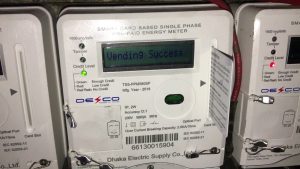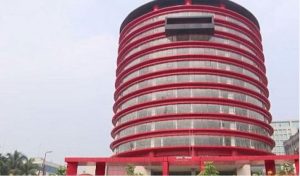Since the general election in September, Sweden has found itself in a political deadlock awaiting the formation of a government. One of the issues dividing the two main parliamentary blocs is whether there should be a cap on profit margins for publicly funded private schools. A government proposal to introduce such regulation was stopped by the Parliament in June.
The Swedish school system has received considerable international attention in recent years due to alarming test scores in the OECD’s international PISA study, which gauges the skills and knowledge of 15-year-old students. Most of the media coverage has focused on Sweden’s declining test results and growing educational inequality. However, a less well-known but equally alarming phenomenon has received almost no attention abroad: school segregation.
Segregation is one of the most serious social problems facing Sweden and many other wealthy nations. A society that is increasingly divided into social and ethnic enclaves faces the risk of increasing tensions and polarization. In Sweden we have seen this on a weekly basis in recent years, with an alarming level of violence in suburbs that has received widespread attention.
A recent report (the English title would be “A Nation Divided – School Choice and Segregation in Sweden”) that I have co-authored for the Stockholm based think tank Arena Idé shows that well-educated and Swedish-born families increasingly opt out of schools where the children have parents with lower educational attainments and an immigrant background. We also show that this “white flight” in Swedish municipalities throughout the country is increased by school choice and other reforms introduced in the early 1990s, whereby publicly financed private schools are allowed to compete with municipal schools for school vouchers allotted to each individual student.
A New Sweden
Previously, school segregation has mainly been seen as a big city problem. However, our report shows that this is no longer true. Our new approach is to disaggregate the data at school level for all 30 medium-sized municipalities in Sweden (with a population of 50-100,000). We have used data from The National Agency for Education for all secondary schools and created a segregation index that takes into account two characteristics of the pupils’ parents: their level of education and whether they are foreign-born. What we found was quite disturbing and shows a new image of Swedish society that may surprise international observers:
Of the 30 municipalities, 28 are segregated. This means that there are large gaps between schools when it comes to the proportion of parents who are foreign-born and/or educated below secondary level. Of the 356 schools in our study, 147 (one in four) are highly segregated.
In 16 of the 28 segregated municipalities, we find that children of well-educated Swedish middle-class parents are highly concentrated in private schools, whereas children of less-educated foreign-born parents are concentrated in municipal schools. This indicates that school segregation in these municipalities is to a large extent caused by school choice and by the right of establishment for private schools (see below). In other words, it cannot be explained by residential segregation.
Almost half (49 percent) of students in schools with a high proportion of well-educated Swedish-born parents are enrolled in private schools. Only six percent of the students in schools with a high proportion of low-educated foreign-born parents are enrolled in private schools, while 94 percent go to municipal schools.
The results in our study should be viewed in light of two recent reports: one from the OECD and another from UNICEF, both highlighting the inequality in the Swedish school system. UNICEF places Sweden 25th of 41 wealthy nations and notes that school results in Sweden are highly correlated with the students’ socio-economic backgrounds. The OECD report concludes that “most empirical evidence in countries as diverse as Chile, New Zealand, Sweden, the United Kingdom and the United States suggests that reforms introducing greater school choice also tend to increase academic and socio-economic sorting because more advantaged, highly educated families are more likely to make better-informed choices”.
In fact, Sweden’s poor school performance has been such a cause of concern for the OECD that it has recommended a limitation on families’ right to choose schools. Similarly, the Swedish National Agency for Education has pointed to school choice as a contributing factor to segregation and inequality in the school system. In our report, we also highlight three other components of the Swedish school system:
Right of establishment for private schools, which allows private schools to open in a municipality even if it leads to increased segregation.
Uncapped profit margins of publicly funded for-profit schools, which create incentives to minimize costs (e.g. in teacher wages) and “cream skim” top students.
School vouchers, which benefit schools that attract a less costly and more homogenous student body (i.e. from Swedish-born middle-class families).
Educational Inequality
It is clear that the Swedish school system, once known for its egalitarian ambition and high degree of equality in outcomes, now effectively sorts children by ethnic and socio-economic background. And, although the escalating violence in many Swedish suburbs cannot directly be connected to school segregation, it is very likely that segregation is a contributing factor. Our report summarizes a large body of research on the negative effects that segregation has on a wide range of social factors, such as educational and occupational choices, income and unemployment, health and criminality, and social attitudes towards other groups. Most of these outcomes have a considerable impact both on an individual and a societal level.
The results make it painfully clear that the Swedish school system effectively works against the very idea that schools should level the playing field for students from all backgrounds and give every child equal opportunity. Even after the rise of right-wing populism in Sweden, our established political parties have proven themselves unable, or unwilling, to rein in the highly unregulated Swedish school market.Governments seeking inspiration for school reforms should look elsewhere – unless they are looking for a cautionary tale.
About German Bender
German Bender is Head of Labour Market and Education Policy at the Stockholm-based think tank Arena Idé and has a background as Senior Research Officer at the Swedish Confederation of Professional Employees (TCO) and a Speech Writer at the Swedish Trade Union Confederation (LO).
source: Social Europe




